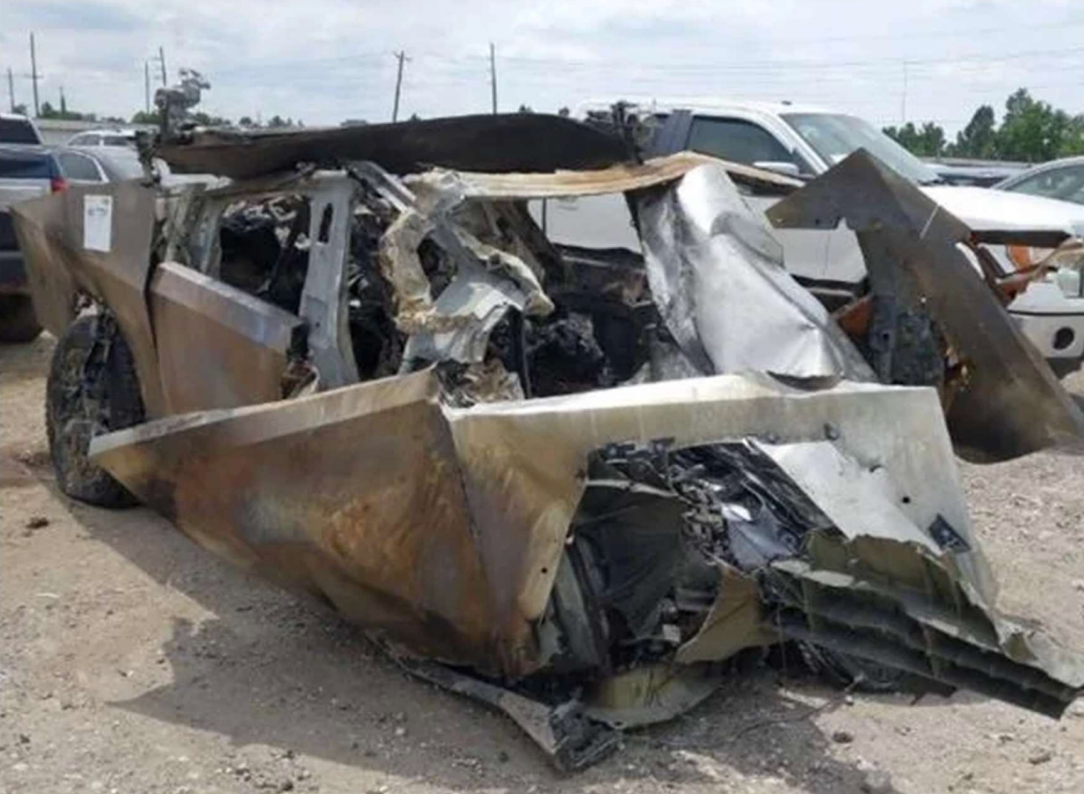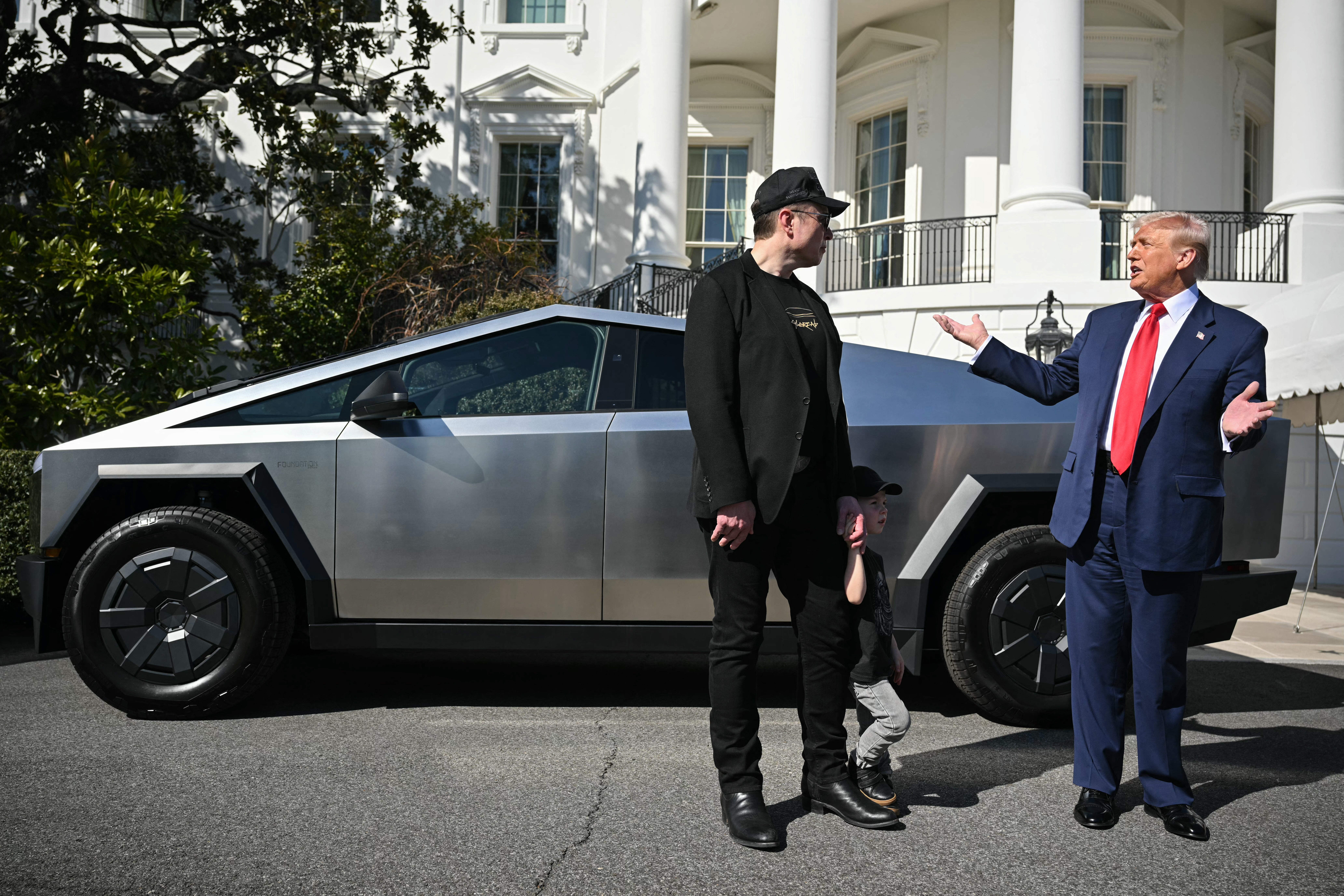A Tesla Cybertruck owner in Texas was unable to escape after rolling it into a ditch last year, experiencing an unthinkable demise as the batteries powering the $100,000 stainless steel SUV burst into flames with such intensity the helpless driver’s skeletal system literally disintegrated, his family says.
Michael Sheehan, 47, «burned to death at 5,000°F – a fire so hot his bones experienced thermal fracture,» according to a gut-wrenching lawsuit his widow and parents have now filed against the electric auto manufacturer headed up by billionaire Elon Musk.
«He was eight inches shorter in length than he was before he burned,» attorney S. Scott West told The Independent. «That’s thermal fracture.»
But Sheehan, who was the first-ever person to perish in a Cybertruck wreck since the model hit the market in November 2023, didn’t have to die, said West, who worked as an industrial design engineer before becoming a lawyer. The suit by Sheehan’s family says the single-vehicle crash would have normally been survivable, but that the «defectively designed» Cybertruck instead trapped the registered nurse inside and incinerated him alive.
«Every religion has a version of hell, and every version of hell has fire,» West said. «It is the most excruciating and longest torture of any death. Whether it’s steam or fire or electrical, the nerves are literally exposed to everything. It’s horrific. If you’ve ever been to a hospital burn unit, you’ll hear patients begging the doctors to let them die because the pain is so bad.»
In the 10 months following Sheehan’s ghastly death, West said he has been trying to reach a settlement with Tesla to avoid a lawsuit, he explained. However, West said, talks eventually collapsed and «we needed to move forward, for the family.»
A Tesla spokesperson did not respond to a request for comment.

On April 25, 2024, Sheehan purchased a brand-new Cybertruck from a Tesla showroom in the Houston suburb of Cypress, Texas, according to his family’s complaint, which was filed June 13 in Harris County District Court.
Just 102 days later, the complaint says Sheehan was driving home when the Cybertruck “left the road” and struck a large concrete culvert, after which the vehicle’s “hyper volatile” battery system went into “thermal runaway” – a chain reaction of short-circuits ultimately resulting in uncontrollable temperature escalation – and caught fire.
Once power was lost, it was impossible for Sheehan to open the Cybertruck’s electrically operated doors in the normal way, the complaint goes on, highlighting a major issue that has similarly doomed others riding in Teslas. The external door handles also failed to work, and the emergency manual door release handles within the Cybertruck are “unreasonably difficult to locate in an emergency,” the complaint states.
“Not only are you riding on top of 3,000 pounds of batteries, this ‘spaceship’ design is a double-edged sword,” West told The Independent, alleging that aesthetics took priority over functionality at Tesla when designing the Cybertruck.
Among other shortcomings, Tesla could have chosen to use safer battery cells with slower thermal propagation, which are readily available, thus giving occupants more time to get out after a crash, according to the Sheehan family’s complaint. Doing so would not have impacted the vehicle’s utility, and alternative designs “were both economically and technologically feasible,” it says.

The filing also alleges Cybertrucks are “not crashworthy,” due to the proximity of drive motors to battery modules, the faulty design of energy-absorbing structures in proximity to battery modules, and “no consideration for movement of components during [a] crash sequence.”
Further, the complaint maintains, Tesla provides “[i]nsufficient warnings or training to occupants regarding safe exit procedures post-crash.”
“Michael was a Mensa-level guy, very, very smart,” West said. “But when Tesla delivered this [Cybertruck] to him, the instructions they gave him were woefully inadequate to handle a situation like this.”
West “felt like an idiot” the first time he ever drove a Tesla, he recalled.
“I couldn’t figure out how to turn it on, I sat literally for nine minutes in a rental car parking lot,” West continued. “That’s the eternal factor in human error – it’s incumbent upon you as a manufacturer to take extra steps to recognize that [new Tesla owners] need additional training.”
West conceded that Sheehan “had some alcohol in his system” at the time of the crash, which the complaint explicitly acknowledges. Still, he said, “that shouldn’t sign his death warrant.” In fact, it was Tesla’s “gross negligence” that caused Sheehan’s untimely demise, according to the complaint.

Three months after Sheehan died behind the wheel of his Cybertruck, three college students in Piedmont, California were burned to death in a Cybertruck that veered off the road and slammed into a tree. While one of the occupants was able to make it out alive, the flames were so hot, rescuers were unable to reach the others.
Tesla has issued at least eight recalls for the Cybertruck since its release, over problems ranging from malfunctioning accelerator pedals to faulty windshield wiper motors to body panels that suddenly began to delaminate. Cybertruck sales have struggled, with resale prices cratering, as other marques make large gains in a global electric vehicle market that was once Tesla’s to lose.
The brand has recently suffered a grievous blow to its image, resulting in plummeting sales and a sinking stock price, following Musk’s ill-fated foray into politics, hitching his wagon to President Donald Trump as “first buddy” and throwing thousands of federal employees out of work as titular leader of the quasi-governmental Department of Government Efficiency.
Beyond the Cybertruck, Tesla has faced lawsuits from others who say they were sold a bill of goods that didn’t deliver. In December, the family of a California man who was crushed to death behind the wheel of a Tesla Model S in “full self-driving mode,” sued the manufacturer over its allegedly bogus claims the vehicle could actually operate autonomously. Earlier this year, a Westchester County, New York, man sued Tesla after he claimed to have activated the autopilot feature in his Model Y sedan, which then promptly drove itself into a tree.

Michael Sheehan, according to his obituary, enjoyed cooking for his wife and friends, had a passion for zombie movies and was blessed with a “gentle spirit.”
“Knowing and loving Michael was a true joy,” his obit read. “He made a profound impact on so many lives. He was unique, authentic, caring, funny and he lived his life unapologetically… Words cannot express the deep sorrow and devastation we feel in losing him.”
West hopes the case will put the world’s richest man on notice that his company’s vehicles are unsafe for everyday use, he told The Independent.
“I’d love for them to put me out of business on Tesla Cybertrucks,” West said. “There’s my challenge to Elon. Put me out of business. Make these vehicles so safe that I don’t have to do this anymore.”
Sheehan’s family is seeking undetermined monetary damages to be determined by a jury.

